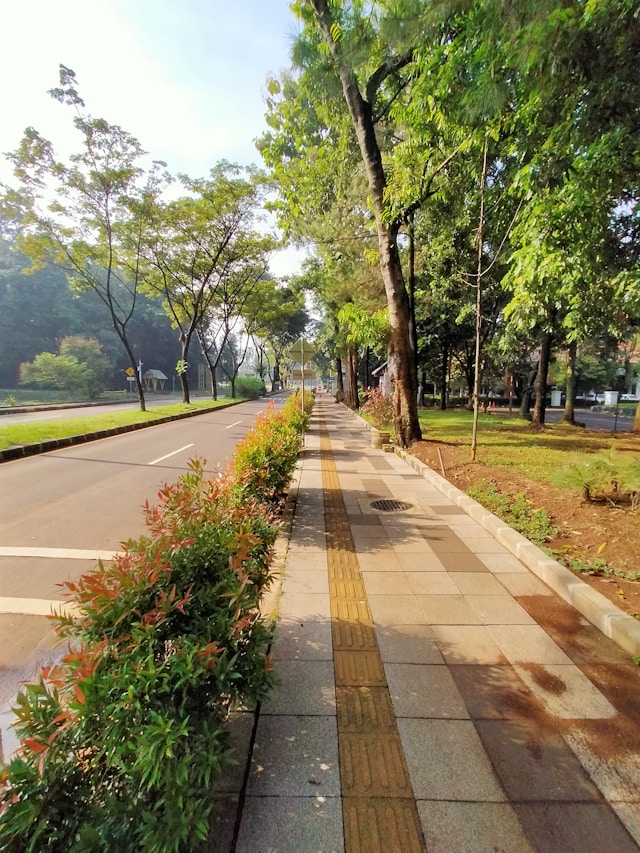A well-constructed concrete sidewalk not only enhances the aesthetics of a property but also contributes to its functionality and longevity. Whether you’re a homeowner with a DIY project or a contractor aiming for excellence, these essential tips will guide you in building better concrete sidewalks in Oklahoma City. From cost considerations to construction techniques, this comprehensive guide ensures a successful sidewalk project that adds value to any environment.
Section 1: Strategic Planning
1.1 Site Assessment:
Begin by conducting a thorough site assessment to understand the terrain, soil conditions, and drainage patterns. This information will influence your design and construction decisions, ensuring a sidewalk that stands the test of time.
1.2 Obtain Necessary Permits:
Check local regulations and secure the required permits before starting your concrete sidewalk project in Oklahoma City. Compliance with zoning codes and municipal guidelines is crucial to avoid potential legal complications during and after construction.
Section 2: Cost Considerations
2.1 Estimate Concrete Sidewalk Cost:
Estimate your project’s concrete sidewalk cost in Oklahoma City accurately by factoring in supplies, labor, equipment rental, and finishing elements. Getting quotes from local suppliers and contractors in Oklahoma City will help you create a reasonable budget.
2.2 Explore Cost-Saving Measures:
Look for opportunities to optimize costs without compromising quality. Consider factors like the type of concrete mix, finishing techniques, and excavation methods to identify potential savings.
Section 3: Material Selection
3.1 Choose High-Quality Concrete:
Selecting high-quality concrete is essential for a durable and long-lasting sidewalk. Consult with suppliers in Oklahoma City to choose a mix that suits the specific requirements of your project, considering factors such as strength and durability.
3.2 Consider Reinforcement:
Depending on the expected load and environmental conditions, consider reinforcing the concrete with materials like steel mesh or rebar. This extra layer of support can significantly enhance the sidewalk’s structural integrity.
Section 4: Designing for Aesthetics and Functionality
4.1 Optimal Width and Slope:
Determine the optimal width of your sidewalk based on expected foot traffic. Additionally, ensure a gentle slope away from structures to facilitate proper drainage and prevent water pooling.
4.2 Incorporate Decorative Finishes:
Enhance the visual appeal of your sidewalk by incorporating decorative finishes. Options such as stamped patterns, colored concrete, or exposed aggregate can complement the surrounding environment and elevate the aesthetic value.
Section 5: Efficient Construction Practices
5.1 Professional Excavation:
Invest in professional excavation services to ensure proper removal of existing materials, debris, and vegetation. A well-prepared subgrade is essential for the stability of your sustainable concrete sidewalk.
5.2 Adequate Subgrade Preparation:
Pay meticulous attention to subgrade preparation, including proper compaction and leveling. This step provides a solid foundation for the concrete, reducing the risk of settling and uneven surfaces.
Section 6: Proper Concrete Placement
6.1 Consistent Pouring:
Maintain a consistent pouring pace to achieve uniform density and strength in the concrete. Avoid abrupt stops and starts, as they can lead to weak joints and an uneven finish.
6.2 Utilize Concrete Vibrators:
Incorporate concrete vibrators during the pouring process to eliminate air pockets and ensure optimal compaction. This results in a smoother finish and enhances the overall strength of the concrete.
Section 7: Curing and Sealing
7.1 Allow Adequate Curing Time:
Provide sufficient time for the concrete to cure, following industry recommendations. Curing is essential for the development of strength and endurance. Consider environmental factors such as temperature and humidity when determining the curing period.
7.2 Apply a Quality Sealer:
Protect your concrete sidewalk by applying a quality sealer. This serves as a barrier against stains, moisture penetration, and harsh weather conditions. Regular sealing enhances the sidewalk’s longevity and minimizes maintenance needs.
Section 8: Accessibility Considerations
8.1 Ensure ADA Compliance:
Ensure your concrete sidewalk complies with the Americans with Disabilities Act (ADA) guidelines. This includes maintaining proper slope gradients, providing tactile warnings, and ensuring accessibility for individuals with mobility challenges.
8.2 Plan for Accessible Features:
Strategically plan the placement of features like ramps, crosswalks, and curb cuts to enhance accessibility and accommodate diverse user needs.
Summary:
Elevating concrete sidewalk construction in Oklahoma City demands meticulous planning, attention to detail, and an unwavering commitment to superior craftsmanship. By integrating these essential tips, your project is poised to yield a robust, visually appealing sidewalk that enhances a property’s overall charm. Whether you’re a dedicated DIY enthusiast or an experienced contractor, following these guidelines ensures success in creating a sidewalk that serves as a testament to both craftsmanship and functionality.
And when it comes to transforming your vision into reality, consider reaching out to the experts at Bill’s Custom Concrete & Yard Drainage. With a legacy of excellence, their expertise in concrete work and yard drainage solutions is unparalleled. Contact Bill’s Custom Concrete & Yard Drainage to embark on a journey toward a sidewalk that not only reflects superior craftsmanship and functionality but also stands as a testament to their unwavering commitment to quality. Your dream sidewalk is just a call away with Bill’s Custom Concrete & Yard Drainage at (405) 755-3975.

